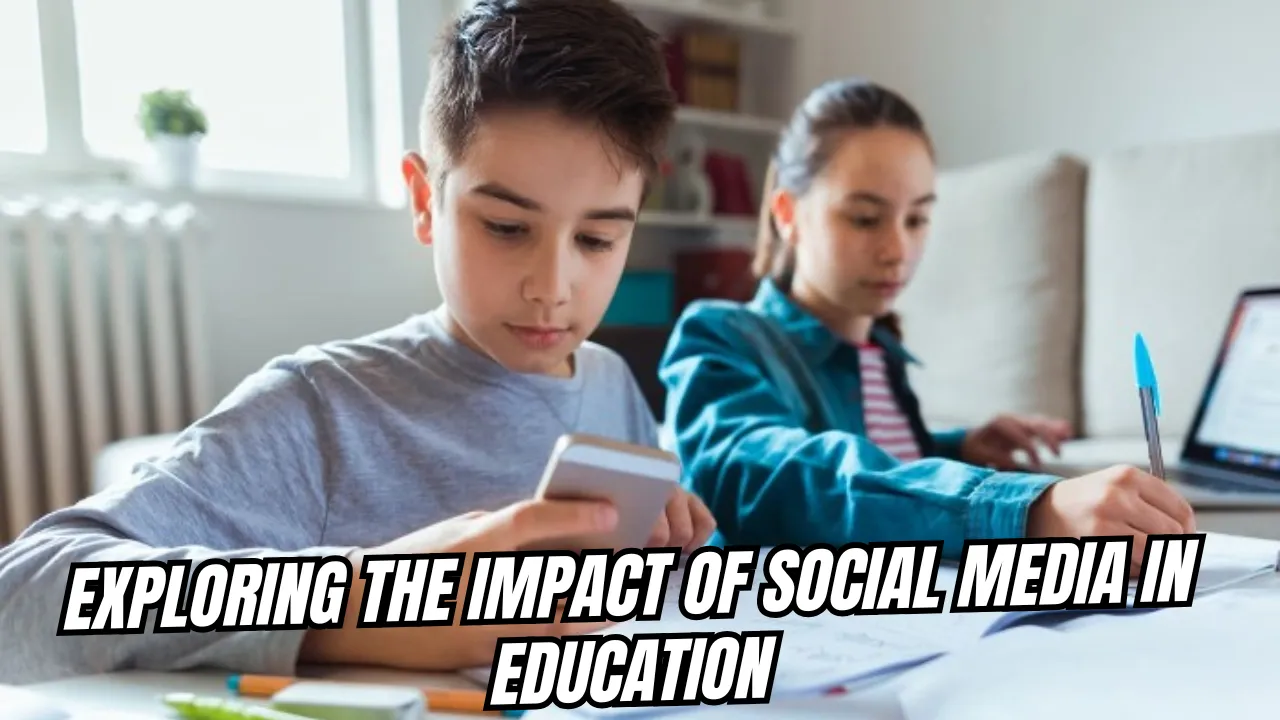Exploring the Impact of Social Media in Education: In the last decade, social media has become an inseparable part of daily life, influencing how we communicate, learn, and connect. Its influence has expanded far beyond personal interactions and entertainment, reaching sectors like business, healthcare, and education. The impact of social media in education is particularly noteworthy, transforming the way students acquire knowledge, interact with peers, and engage with teachers. Today, students are not limited to traditional classroom settings; social media provides endless opportunities to access information, collaborate globally, and develop essential skills.
However, while social media offers numerous advantages in education, it is not without its drawbacks. Understanding both the positive and negative effects is essential for students, educators, and parents to ensure its responsible and effective use.
Impact of Social Media in Education
The impact of social media in education is evident in how it shapes learning environments, fosters communication, and broadens access to information. Platforms like YouTube, Facebook, Instagram, WhatsApp, and X (formerly Twitter) play crucial roles in modern education systems. Students can easily interact with peers and educators, participate in online discussions, and access learning resources from across the globe. Yet, along with these benefits, certain challenges such as distractions, cyberbullying, and privacy concerns demand careful attention.
Overview Table: Key Aspects of Social Media in Education
| Feature | Details |
| Positive Impact | Enhances communication, collaboration, access to learning resources |
| Negative Impact | Risk of addiction, cyberbullying, distractions, privacy issues |
| Educational Benefits | Global learning, professional networking, improved engagement |
| Major Platforms Used | YouTube, Facebook, Instagram, WhatsApp, X (Twitter), Telegram |
| Best Usage Practices | Mindful usage, parental guidance, promoting digital literacy |
Advantages of Social Media in Education
Social media has introduced multiple benefits to the education sector. Let’s explore some of the major advantages:
Global Awareness and Learning Opportunities
One of the primary advantages of social media is its ability to raise global awareness. Students today can stay updated with international events, cultural movements, and scientific advancements by following reliable sources and institutions. Platforms like Twitter, Instagram, and YouTube allow access to a wealth of information, encouraging students to develop a well-rounded global perspective.
Through social media, learning is no longer confined to the classroom. Students can connect with peers and educators worldwide, engage in cross-cultural collaborations, and broaden their academic horizons beyond local boundaries.
Easy Access to Educational Resources
Social media platforms serve as gateways to countless educational resources. Whether it’s video tutorials, research articles, expert lectures, or online courses, students can access valuable learning materials at their fingertips. Teachers frequently share content through platforms like YouTube and Facebook, offering supplementary learning opportunities and interactive resources.
This ease of access allows students to learn at their own pace and revisit complex concepts as needed, enhancing their overall understanding.
Enhancing Collaboration and Communication
Social media facilitates seamless communication between students and educators. Through group chats, forums, and online communities, students can collaborate on projects, participate in group discussions, and seek guidance on academic challenges.
This real-time interaction improves communication skills, encourages teamwork, and helps build professional relationships with mentors and industry experts—skills that are essential for future career success.
Promoting Active Student Engagement
Many students may feel shy or hesitant to participate in face-to-face classroom discussions. Social media provides a comfortable and open space where they can express their thoughts freely. Platforms like discussion boards, educational groups, and virtual classrooms encourage active student engagement, ensuring that even the quietest students find a voice in the learning process.
Through these platforms, students can ask questions, seek clarification, and collaborate actively, enriching their educational experience.
Disadvantages of Social Media in Education
While the positive impact of social media in education is undeniable, its misuse or overuse can lead to several challenges. Below are the key disadvantages:
Excessive Addiction and Distraction
One of the significant downsides of social media is the potential for addiction. Many students find themselves spending excessive hours scrolling through feeds or engaging in non-educational content, leading to distractions from their academic responsibilities. Over time, this habit can negatively impact academic performance, time management, and concentration levels.
Reduced Self-Confidence and Comparison Issues
Social media often presents a filtered, idealized version of reality. Constant exposure to influencers and peers showcasing seemingly perfect lives can lead students to compare themselves unfairly. This comparison may result in reduced self-esteem, lack of confidence, and feelings of inadequacy.
Health-Related Concerns
Prolonged screen time due to excessive use of social media can contribute to physical and mental health problems. Common issues include:
- Eye strain and headaches from long screen exposure
- Poor posture leading to physical discomfort
- Sleep deprivation due to late-night social media usage
- Increased stress and anxiety levels
Cyberbullying and Privacy Risks
One of the more severe challenges posed by social media is cyberbullying. Negative comments, harassment, or offensive messages can have a profound effect on a student’s mental well-being. Additionally, social media can expose users to privacy risks, especially if they share sensitive information recklessly.
Educational institutions and parents must guide students on how to protect their privacy and handle online negativity responsibly.
Responsible Use of Social Media in Education
To maximize the benefits and minimize the drawbacks of social media, students must learn to use these platforms responsibly. Here are some best practices:
- Limit screen time and avoid unnecessary distractions
- Engage primarily in educational and skill-building content
- Maintain privacy settings and avoid sharing sensitive information
- Report instances of cyberbullying immediately
- Seek help from educators or parents when facing online challenges
Additionally, schools and parents should promote digital literacy, ensuring students are well-versed in the ethical and safe use of social media.
Conclusion
The impact of social media in education continues to reshape the landscape of learning. From promoting global awareness and providing easy access to educational resources to encouraging student engagement and fostering communication skills, social media offers numerous opportunities for academic growth.
However, its disadvantages—such as addiction, health concerns, and privacy issues—highlight the need for mindful usage. Educators, parents, and students must work together to leverage social media’s strengths while safeguarding against its risks.
By using social media responsibly, students can benefit from a world of knowledge and collaboration, enhancing both their academic journey and personal development.
Frequently Asked Questions (FAQs)
What is the importance of social media in education?
Social media plays a crucial role in modern education by improving access to information, fostering communication between students and teachers, and encouraging global learning opportunities.
How does social media benefit students academically?
It offers students access to expert lectures, online tutorials, and educational resources, making learning more flexible, interactive, and efficient.
What are the major disadvantages of social media in education?
Excessive use of social media can lead to distractions, addiction, cyberbullying, mental health issues, reduced self-confidence, and privacy concerns.
How can students use social media responsibly?
Students should limit non-educational use, protect their personal information, avoid sharing sensitive details, and focus on engaging with educational content.
What are some popular social media platforms used in education?
Popular platforms include YouTube, Facebook, Instagram, WhatsApp, Telegram, X (Twitter), and Snapchat, all offering different ways to facilitate learning and communication.







